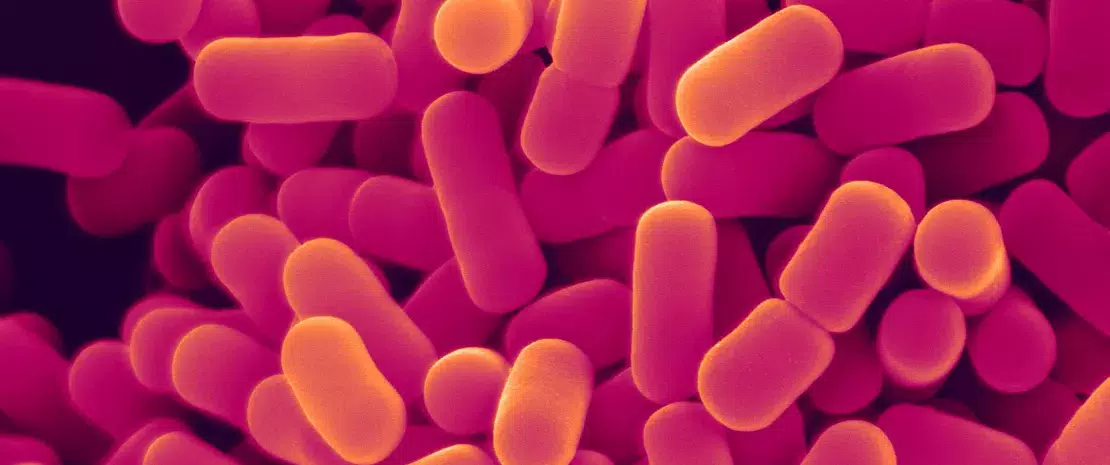Mitigating malnutrition with biotics?
Can certain probiotic bacteria, or even pieces of their cell walls (postbiotics), mitigate the effects of malnutrition? A study conducted with a strain of Lactiplantibacillus plantarum raises hope.
Sources
This article is based on scientific information

About this article
Food is not the only thing that influences growth… The gut microbiota also plays an essential role. A research team had previously shown in a mouse model that the gut microbiota may buffer the deleterious effects of chronic malnutrition by limiting the body’s resistance to growth hormone (GH) and elevating circulating levels of growth factor IGF-1. The result is less stunting of growth. The researchers focused on a particular strain of Lactiplantibacillus plantarum because of its ability to promote growth in a model of malnourished fruit flies (Drosophila). This time, the team sought to decipher the underlying mechanisms 1.
45% Around 45% of deaths among children under 5 years of age are linked to undernutrition. These mostly occur in low- and middle-income countries.
(sidenote: Malnutrition_World Health Organization_June 2021 )
Positive effect of Lactiplantibacillus plantarum on chronic malnutrition
For this new experiment, the researchers took newly weaned mice and subjected them to a reduced-protein diet, where daily protein intake was 75% lower than in a standard diet. The mice were separated into two groups, one receiving the bacteria and the other a placebo for 56 days. At the end of the experiment, the mice receiving the bacteria were larger and heavier than the placebo group, even if they did not fully make up for the growth delay caused by malnutrition. The researchers also observed metabolic and hormonal changes in the mice receiving the bacteria, including improved circulating levels and activity of IGF-1 and insulin. These changes were mediated by components of the bacterial cell wall, particularly muramyl dipeptide.
149 million children In 2020, 149 million children under 5 were estimated to be stunted (too short for age).
(sidenote: Malnutrition_World Health Organization_June 2021 )
Increased absorption of nutrients
Chronic malnutrition reduces the number of gut stem cells, leading to a reduction in epithelial cells, which also have shorter villi, resulting in a lower absorption of nutrients. Based on their findings, the authors suggest that after the ingestion of Lactiplantibacillus plantarum certain bacterial compounds, including muramyl dipeptide, are released from the bacterial cell wall. The NOD2 receptor in the intestinal wall detects muramyl dipeptide and is stimulated by it, leading to a cascade of cellular signaling that increases intestinal cell proliferation and allows for the maturation of the epithelium, thus improving the absorption of nutrients. This in turn stimulates the activity of the nutrient-sensitive GH/IGF-1/insulin axis, improving postnatal growth among mice.
Three ways to fight malnutrition
These results suggest that, coupled with renutrition, certain strategies may mitigate the stunting caused by malnutrition:
- probiotic supplements (containing Lactiplantibacillus plantarum)
- (sidenote: Postbiotics A preparation of inanimate microorganisms and/or their components that confers a health benefit on the host. Salminen S, Collado MC, Endo A, et al. The International Scientific Association of Probiotics and Prebiotics (ISAPP) consensus statement on the definition and scope of postbiotics. Nat Rev Gastroenterol Hepatol. 2021 Sep;18(9):649-667. ) supplements (pieces of bacterial cell wall or purified NOD2 ligands). A ray of hope for the 149 million children under the age of five who suffer from malnutrition. 2
Xpeer course: The rationale behind why and how to choose a probiotic
Recommended by our community

"Wow what a wonderful article" - Kamara Daniel (From Biocodex Microbiota Institute on X)
1. Schwarzer M, Gautam UK, Makki K et al. Microbe-mediated intestinal NOD2 stimulation improves linear growth of undernourished infant mice. Science. 2023 Feb 24;379(6634):826-833.
2. V. Mannar, R. Micha, “Global Nutrition Report 2020: Action on equity to end malnutrition” (Development Initiatives Poverty Research, 2020);



